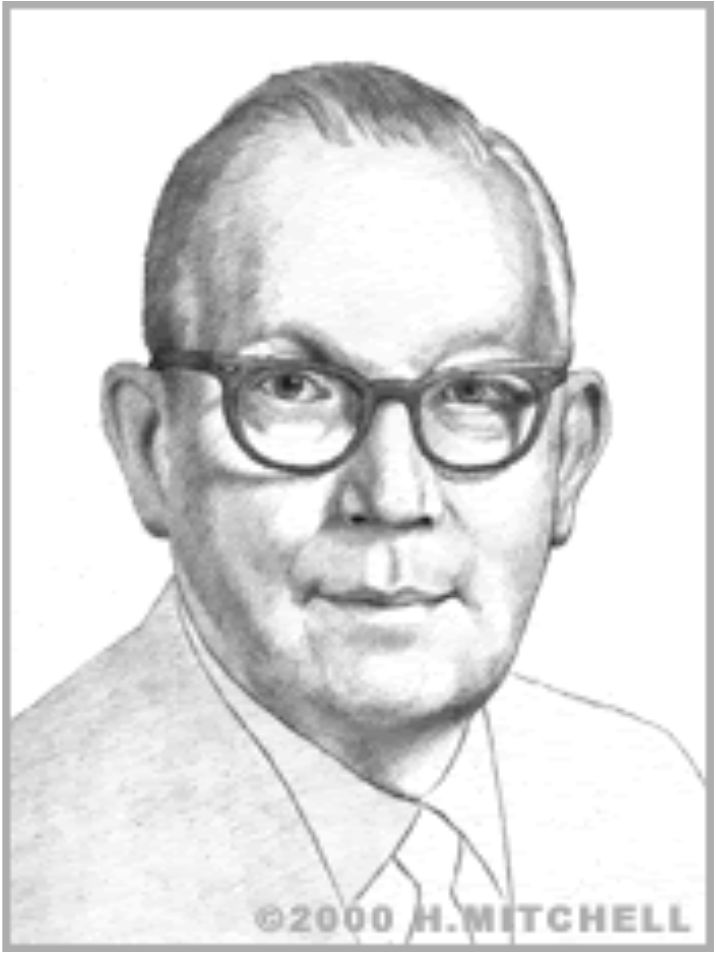Roy Plunkett
In 1938, Roy J. Plunkett capitalized on a chemical accident and invented one of the best known and most widely used polymers of all time: Teflon®.
Plunkett was born in New Carlisle, Ohio on June 26, 1910. His academic specialty was chemistry, in which he earned a bachelor’s degree from Manchester College in 1932. Subsequently, Plunkett earned a master’s degree in 1933 and doctorate degree in 1936, both from Ohio State University. Plunkett's first postdoctoral position was with E.I. du Pont de Nemours & Co., where he worked from 1936 until his retirement in 1975.
Plunkett's first assignment, as a research chemist at DuPont's Jackson Lab in Deepwater, New Jersey, was synthesizing new forms of the DuPont refrigerant Freon®. His work moved along methodically until April 6, 1938. On that day, a mistake led to a discovery, which then turned into a great invention.
Plunkett and his technician assistant Jack Rebok were testing the chemical reactions of the refrigerant gas tetrafluoroethylene (TFE). One pressurized cylinder of the gas, which they themselves had filled earlier, failed to discharge when its valve was opened. They set the cylinder aside, but noticed that it was too heavy to be empty. Despite the risk of an explosion, they cut it open and discovered that the gas inside the cylinder had inexplicably solidified into a white powder. Intrigued, Plunkett put his scheduled work aside and began to test the properties of this substance. It was much more lubricating than other slippery solids, like graphite. In addition, it proved unaffected by virtually all other chemicals and had an extremely high melting point.
In time, Plunkett found that the gas had polymerized (that is, its molecules had bonded), becoming polytetrafluoroethylene (PTFE) resin. Its unique properties were caused by an impenetrable shield of fluorine atoms which lock onto and protect the compound's essential string of carbon atoms. More importantly, Plunkett invented a way to reproduce the TFE-to-PTFE polymerization in the lab.
The next year, Plunkett became supervisor of Du Pont's tetraethyl lead production, while the plastics division refined his production process for the PTFE resin. By 1941, PTFE had both a patented process and a trade name: Teflon®. In 1946, the first products using this nonstick, high-heat material were sold: machine parts for military and industrial applications. In the early 1960s, Teflon® found its most famous use, as a seemingly miraculous nonstick surface for cookware. Today, Teflon® is used as a coating for myriad metals, fabrics and wires, but also as a plastic in its own right. Indeed, Teflon® has expanded into a whole family of polymers, found in industries as varied as aerospace and pharmaceuticals, and sold world-wide.
When he retired from Du Pont in 1975, Plunkett had guided their development of numerous fluorochemical products, for virtually every field of manufacturing. Plunkett was recognized for his work by being inducted into the Plastics Hall of Fame in 1973 and the National Inventors Hall of Fame in 1985. He passed away on May 12, 1994 from cancer at his Texas home.


